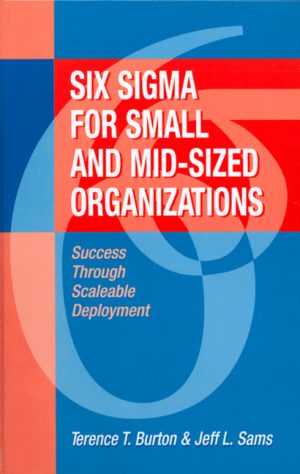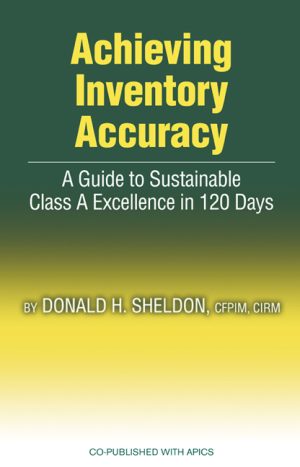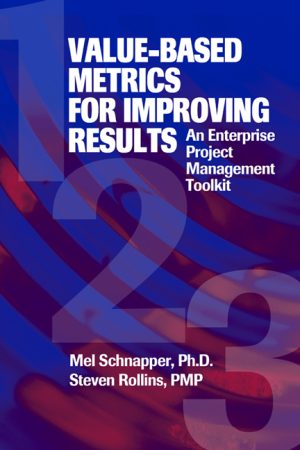Project Valuation Using Real Options
$49.95
A Practitioner’s Guide
By Dr. Prasad Kodukula and Chandra Papudesu
Hardcover, 6×9, 256 pages
ISBN: 978-1-932159-43-1
July 2006
LEARN & EARN: Get 6.4 PDUs in the PMI skill areas of Technical or Strategic and Business Management Skills
Description
Business leaders are frequently faced with investment decisions on new and ongoing projects. The challenge lies in deciding what projects to choose, expand, contract, defer, or abandon, and which method of valuation to use is the key tool in the process. This title presents a step-by-step, practical approach to real options valuation to make it easily understandable by practitioners as well as senior management. This systematic approach to project valuation helps you minimize upfront investment risks, exercise flexibility in decision making, and maximize the returns.
Whereas the traditional decision tools such as discounted cash flow/net present value (DCF/NPV) analysis assume a “fixed” path ahead, real options analysis offers more flexible strategies. Considered one of the greatest innovations of modern finance, the real options approach is based on Nobel-prize winning work by three MIT economists, Fischer Black, Robert Merton, and Myron Scholes.
Key Features
- Shows you how to achieve strategic alignment of projects, increase project flexibility and sustain competitive advantage
- Explains why traditional valuation methods such as DCF/NPV and decision tree analyses are no longer effective in today’s uncertain world
- Walks you through each step of using real options to value projects regardless of the reader’s beginning financial knowledge and helps the practitioner communicate the results to the senior management
- Presents multiple scenarios and examples that show the true value of using real options as well as the challenges, pitfalls and success stories of this valuation technique
- Illustrates the usefulness of real options to value purchases of special features in capital equipment, temporarily shutting down and restarting equipment, selecting ingredients of a product or service, changing the product mix, and much more
About the author(s)
Dr. Prasad Kodukula, PMP, President, Kodukula & Associates, Inc. (www.kodukula.com), is a management consultant, executive coach and inventor with nearly 20 years of professional experience. He has spoken in 15 countries to a total audience of more than 100,000 people on project management, project portfolio management and leadership skills. His clients include 15 Fortune 100 companies and the U.S. government. Dr. Kodukula is also co-founder and president of 2Ci (www.constantcompliance.com), where he is involved in developing environmental and homeland security technologies. In 2005, 2Ci received InnovateIllinois award for being the most innovative small business in the environmental category in Illinois. Dr. Kodukula was recognized by the U.S. Environmental Protection Agency and the Kansas Department of Health and Environment for his outstanding contributions in environmental science and engineering. His degrees are from the Illinois Institute of Technology, Cornell University and Rutgers University. He is a contributing author on four books and has co-authored two books and more than 40 technical articles.
Mr. Chandra Papudesu, M.S., is a senior project manager involved in directing complex software implementation projects and new business development at a software development company. His professional experience includes both financial and real options and he has developed a trading application aimed at the energy trading market and spreadsheet models to calculate real options. Mr. Papudesu has degrees from the Indian Institute of Technology and Massachusetts Institute of Technology.
Table of Contents
Chapter 1: Introduction
Chapter 2: Traditional Project Valuation Tools
Chapter 3: Challenges with Traditional Tools
Chapter 4: Real Options: The New Tool
Chapter 5: ROA Calculation
Chapter 6: ROA Application
Chapter 7: Simple Options
Chapter 8: Advanced Options
Chapter 9: Real Options in Real World
Appendices:
A – Assessment Survey: Do You Need Real Options?
B – Derivation of Real Options Equations
C – Replicating Portfolio Approach
D – Building Spreadsheets to Real Options Calculations
Related products
-

The EDGAR Online Guide to Decoding Financial Statements
Retail Price: $34.95$29.95 Add to cart -

Six Sigma for Small and Mid-Sized Organizations
Retail Price: $49.95$44.95 Add to cart -

Winning E-Learning Proposals
Retail Price: $64.95$54.95 Add to cart -

Achieving Inventory Accuracy
Retail Price: $49.95$44.95 Add to cart -

Value-Based Metrics for Improving Results
Retail Price: $54.95$49.95 Add to cart

